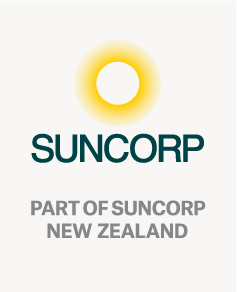Severe rain and weather: If you are a Vero customer and need to claim, fill out our online claims form Claims | Vero or contact your broker.
Your industry risk report
Most common claims for Medical services
Weather events
26%
Accidental damage/Loss
21%
Water damage/Burst Pipes
11%
Burglary/Theft
11%
Damage in transit
8%
Impact damage
4%
Fusion
3%
Source: Vero New Zealand Claims 2019-2024
The 3 top causes – and what you can do to avoid them
Weather events
We all know how changeable NZ weather can be. From storms and high winds to hail, snow and lightning – these events can all cause damage to property. You can reduce these risks by:
- Ensuring your building is well maintained and weathertight
- Making sure gutters and yard drains are kept clear
- Checking overhanging branches and nearby trees
- Securing outside stock, plant and equipment
- Clearing snow from roofs and gutters (if safe to do so).
To find out how, check out the fact sheets and toolsOpen
Accidental damage/Loss
Accidents happen. But knowing the risks can protect property, equipment and people. You can reduce them by:
- Having a risk-aware culture at your workplace
- Doing regular maintenance checks
- Training your staff
- Introducing clear operating procedures.
To find out how, check out the fact sheets and tools Open
Water damage/Burst Pipes
Water damage can cause major disruption to a business and result in extensive damage to the building, fixtures, fittings, plant and equipment. Also, the combination of water and electricity can pose a fire risk. The good news is, with regular checks and a proper plan, the risks can be significantly reduced.
- Know where the water shut off valves are
- Maintain the building so that its water tight – floor, walls and roof.
- Check gutters, downpipes and yard drains for blockages.
- Inspect plumbing, water pipes and waste lines for leaks, damage or corrosion.
- Check hot water cylinders, under-sink plumbing regularly for leaks.
To find out how, check out the fact sheets and toolsOpen
Keep in mind that things like fire – while it may have a lower claims frequency – can be equally, if not more, devastating.
That’s why we’re helping you understand a range of risks for your business.
To help you, our specialists have compiled a range of information sheets that cover off typical risks.
They might not all be relevant to your specific business, but there are lots of helpful hints and essential ‘must have’ precautions.

Our handy checklist
This handy checklist lets you self-assess risks to your business. It won't affect your policy and you don't need to send it back.
Industry risk guide
download iconMedical Centres
Specific watch-outs
Deeper insights and more detailed information for the most frequent, or significant, kinds of claim.
Fire Systems
download iconFire Alarms
download iconFire Detection Using Intruder Alarms
download iconFire Extinguishers & Hose Reels
download iconAutomatic Fire Sprinkler Systems
Electrical
download iconUsing Power Boards
download iconThermographic Imaging
download iconPeriodic Verification
download iconPeriodic Verification Tests
Security
download iconPhysical Security
download iconIntruder Alarms & Money
download iconUltra Fast Broadband & Intruder Alarms
download iconUnoccupied Buildings
Vehicles & Driving
download iconStaying safe while on the move
download iconTake your journey planning up a gear
download iconElectric Vehicles
Business Resilience
download iconOpening up after a shutdown
code insert here
The information presented is of a general nature only and is provided only to help you understand some of the physical risks a business may have and what an insurer might expect you do to manage those risks. It is not intended for any other purpose. You should always seek appropriate professional advice about how you manage the particular risks in your business. No representation or warranty, expressed or implied, is made as to the accuracy or completeness of the information and no responsibility is accepted for any loss, penalty or damages (including special or consequential damages) arising out of the use of all or part of the information. The information presented does not replace the need for appropriate professional advice. Reliance on this communication will not affect or influence policy response.
